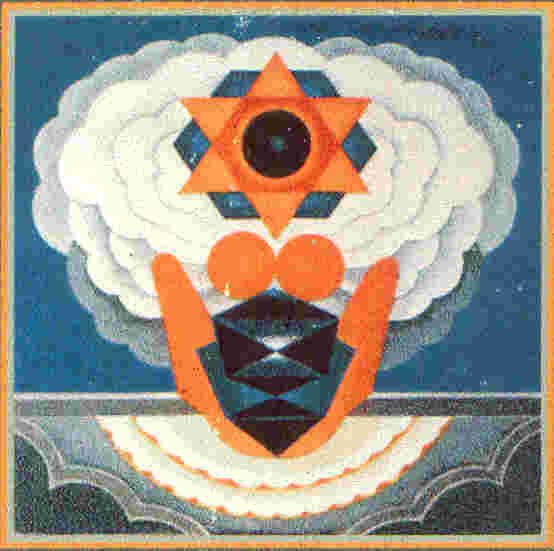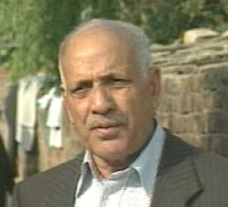|

|

|
|
Kashmiri Pandits' Association, Mumbai, India |

|
| | Home | January-February 2004 Issue | |
|
Language Script for Kashmiri Language - 1 … Dr. K. N. Pandita Click: Part 2
The only known script for Kashmiri language is that of Sharada. We have many manuscripts still extant in various libraries, archives and private possession in and outside Kashmir. I am not sure that a scientific study of the efficacy of this script for Kashmiri language has been made. Also the question of when did this script come into existence is also a moot point. Apart from this, what changes took place in the philology of Kashmiri and whether those changes were incorporated in the Sharada script is also not elaborated anywhere. However, I am not denying the importance of Sharada script that was in vogue in Kashmir a couple of centuries before Kalhana wrote his chronicle. The manuscript of Rajatarangini on which Stein worked, and is preserved in Germany, is in Sharada. Stein had to study it and perfect it with the learned Kashmiri Pandits in Srinagar of whom he is highly appreciative. With the advent of the Muslim rule in about AD 1339, Sharada continued to be in use for a number of years. But simultaneously Persian Arabic script was also introduced. Down to the times of Zainu’l-Abidin, both scripts continued to be used, Persian by the ruling class and the elite that had converted to Islamic faith and Sharada by the plebeians and particularly the Purohit class who were most concerned with theological and astronomical literature. Though Sharada remained the script for writing Kashmiri for many years after the rise of the Sultans, yet Sanskrit continued to be the mainstay of Kashmirian literary and historical scholarship. The Brahmans and the Purohit class, if they meant to maintain their reputation as the custodians of ancient Hindu Kashmirian lore, had to perfect their knowledge of Sanskrit language and literature. The fact of the matter is that not only during those early days of transition, even in later times and also now, when we talk about the Kashmiri Pandit scholarship, we unmistakably mean Sanskrit scholarship. In this scenario, Sharada remained limited to writing some of the Kashmiri texts and recording such matter as had liturgical content. In this sense it is not perhaps very safe to say that Sharada script is perfect to represent all vowel and consonant sounds of Kashmirian language. Having said that, we know the history of decline of both Sanskrit and Sharada in Kashmir. The period of transition was over and Persian written in Arabic script replaced Sanskrit as well as Sharada. This happened because in the new social milieu, only Persian had official position and support. The only remarkable thing is that during the transition period, there were Pandit scholars who had streamlined command on both languages, Sanskrit and Persian. And there were also some local Muslim scholars in the same category, who, obviously converts to the new faith, did retain their indigenous culture and traditions though at some cost. With the rise of the Sultans followed by the Sayyids of Baihaq and then the Chaks, only Persian language received full patronage from the royalty and acceptability with the common Kashmirian literati. I don’t think any of the Muslim rulers ever felt the necessity of evolving a script for Kashmiri or reviving the Sharada script of olden days. It is true that a bias against Sanskrit and Sharada developed, and the small Pandit community continued for some time to record their liturgical fund in one of the two languages/scripts viz. Sanskrit and Sharada. Persian flourished for a long time, from 1339 to 1846, a period of nearly five hundred years. I am not going to deal with this aspect except to reiterate that Persian being a very sweet language with very simple grammar and almost musical intonation supported by very rich prose and poetry genres of literature, became very quickly acceptable to the Kashmiris. Perhaps the humanistic teachings of stalwarts of Persian poetry and prose writings left a deep impress on the minds of Kashmiris. The Pandit Karkuns had to learn Persian in order to earn a living by doing clerical jobs. In the process, the major segment of Pandit karkuns lost touch with both Sanskrit and Sharada and when the Afghans seized power in Kashmir in the early decades of 18th century, the remnant of the Pandit community identified itself with the new and imported cultural ethos. The Muslims of Kashmir, if and when they needed, began adopting Persian script for Kashmiri idiom. It was not a policy matter with the contemporary government for the government never needed it. It was only on personal level. With Sikhs assuming power in Kashmir, Persian continued to be the official and formal language of Kashmir. Historical record available to us today of that period is all in Persian, especially historical fund. Birbal Kachroo, a Pandit scholar of the day, wrote the history of Kashmir in Persian. Many Pandit Persian versifiers earned a name during this period. During the later period of Maharaja Ranbir Singh, Urdu gradually began to replace Persian. I have myself examined minutes of cabinet meetings of Maharaja Pratap Singh written in Urdu. We can find these reports in the archives department with J&K Government. The reason for this shift was that at that point of time, interaction between the State government and people, with the Punjab government and people received a strong boost. In other words, this was the beginning of exposure of Kashmir to the world outside. As Urdu grew to replace Farsi and interaction between Kashmiris and outsiders increased phenomenally, some literate Kashmiris with taste in letters, began to use Urdu script for writing Kashmiri. They had no innovative skills to adapt the Urdu script because the complexity of Kashmiri pronunciation defied such attempts. We can say that every writer adopting Urdu script for Kashmiri had his own methodology and a uniform code of scripts was totally absent. The story of Kashmiri script in post-accession period or post-independence period is sordid enough. Independence had provided an opportunity of promoting indigenous Kashmiri culture and ethos without any obstruction. What is more, an organization called J&K Academy of Art, Culture and Languages was incepted with adequate funds available to it. Ambivalent elements within the so-called nationalist political framework in Kashmir sensitized some half-baked Kashmiri literary scientists to jingoism. Under the tutorship of the Academy of Culture, these half-baked scholars sat together to invent out of the Urdu script a 'standardized' Kashmiri script in Arabic letters without any scientific and technical input from any expert or institution. I have myself been an amusing spectator of their sprawling ignorance. The only principle they kept in sight was never to talk about Sharada script. It was almost something sacrilege to talk of the Pandit tradition, which, of course, was the tradition of their distant ancestors as well. What they produced is a baggage of foolhardiness and ridiculous claim to scholarship. The script they publicized is one in which you can neither consistently write nor can you read it out once you have written something. For last fifty years and more, the governments in the state, the Cultural Academy, cultural organizations and individuals, one and all made a deliberate and concerted effort to ensure that Sharada script was not revived and Roman script was not introduced. Urdu script was given almost something like religious sanctity and it came to be recognized as the essential symbol of ‘Kashmiriyat’. In this way, the path of progress of language and literature was stonewalled, and the people of Kashmir were put on a wrong track that would lead them nowhere. Now with the exodus of Pandits, the looming threat that some day Sharada might be revived as the script for Kashmiri has totally disappeared. As such, the Pandits may not be much concerned with what the people of the valley are going to do with their indigenous traditions including the script. All that one can say is that they will continue to cater to their short-sighted and prejudicial approach to a social and cultural theme of extraordinary importance. However, what relates to the internally displaced Pandits from Kashmir is how they are going to react to this question now that they have comparatively good deal of independence in pursuing their cultural traditions. This is precisely the theme of this article. As we speak about the Pandits and their indigenous traditions, we must not forget that this is a very small and dispersed community in exile for last fourteen years. Dispersal is always a big threat to the perpetuation of indigenous traditions and cultures. In particular when this indigenous community has the compulsion to exist in a vast society of Indian nation in which she has no political locus standi at the moment, her very identity and individuality remain severely threatened. In this scenario, the primary question is whether this unfortunate community, the victim of historical suppression and repression, will be able to retain its identity in part or in full? That its existence and identity are at stake in a secular democratic India is indeed the stupendous irony of fate. Therefore sometimes I think that talking of script, language, traditions and things like that seems nothing short of superfluity. Is there any sense if we waste our energies in discussing these matters as we find them gradually vanishing with the passing of each day. Our children in exile speak all the local languages except their original mother tongue. They need a language that brings them closer to the environs and social milieu surrounding them. They need a language that will open the doors of livelihood upon them. Kashmiri language is least qualified to address these imperatives. Therefore those who are fanatically committed to a search for a scientific script for Kashmiri should not overlook these harsh realities on the ground. Now supposing that we have to develop a script in any case for Kashmir either for the preservation of our cultural fund or for prompting our futuristic aspirations for cultural advancement, then, in my opinion the time is ripe that we come out of emotions and sentiments and begin thinking like cool and considerate scientists. In a bid to evolve a new script that will encompass all peculiar full and broken vowel sounds of Kashmiri language or deformed and corrupted pronunciation of Sanskrit vocabulary, we should first of all try to learn something from the experience of other nations and communities. |
|
|
JOIN US |
|
|


 From a few exchange of dispatches between the Project Zaan organizers, I understand that the question of evolving a scientific script for written Kashmiri is under focus. I am not aware of its details but I think that something is talked about Hindi/Sharada and Roman scripts.
From a few exchange of dispatches between the Project Zaan organizers, I understand that the question of evolving a scientific script for written Kashmiri is under focus. I am not aware of its details but I think that something is talked about Hindi/Sharada and Roman scripts. 

